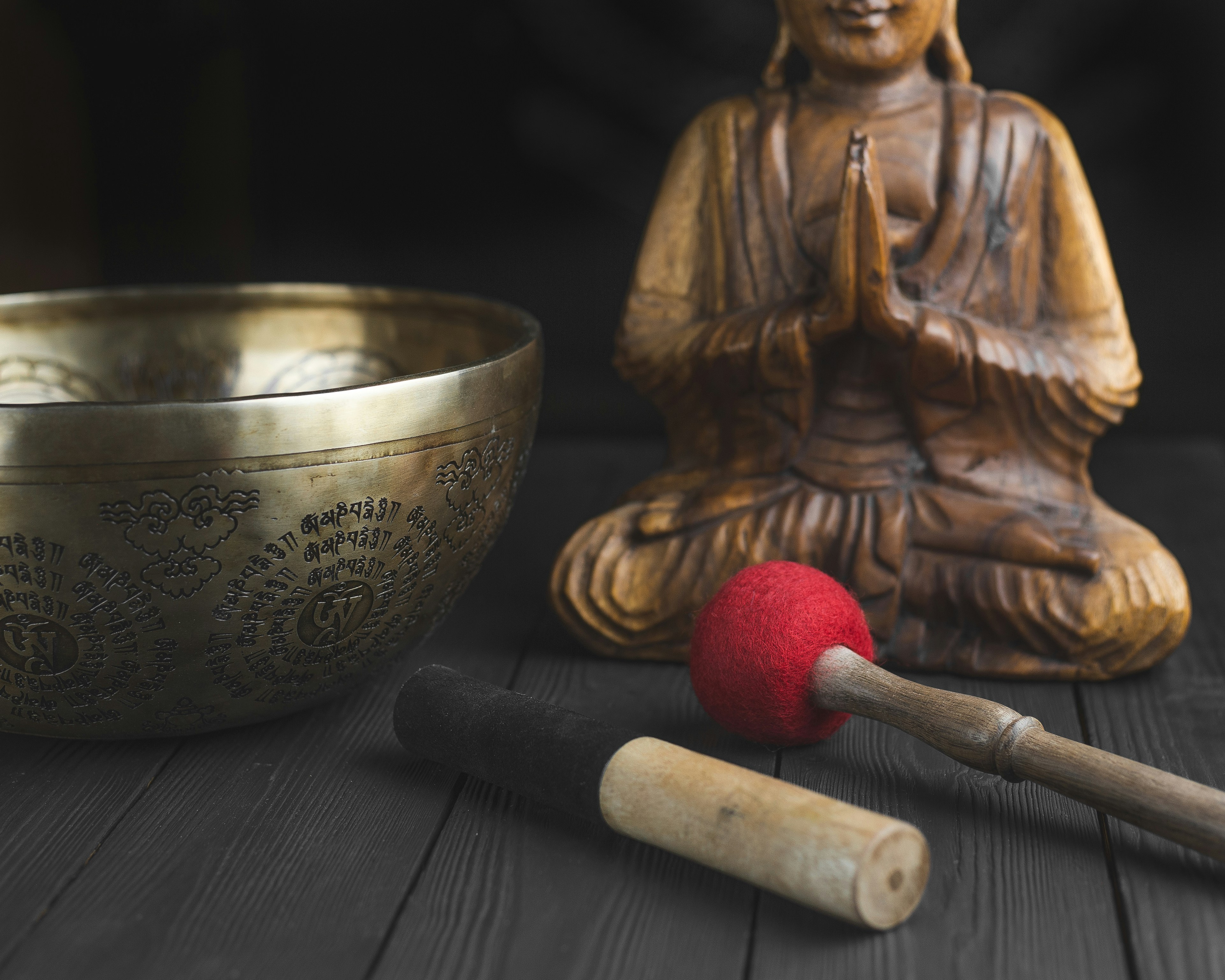Absolutely! You may see yoga as a singular concept, but it’s probably more accurate to describe it as a collection of several different principles, methods, and techniques. Consequently, even if you’re practicing only one aspect, such as asanas (physical postures), pranayama (breathing exercises), or meditative techniques, you’re still practicing yoga.
Yoga is complex, but here’s a simple way to think about this issue: You can practice yoga without getting into its spiritual aspects, just like you can eat ice cream without ever trying mint chocolate chip.
Let’s run with this analogy.
At its core, yoga is like an ice cream shop that offers many different flavors, including physical postures (asanas), breath control (pranayama), meditation, and yes, spiritual exploration. It’s up to you to decide which you want to try.
Some of us will try some flavors and stick to what we enjoy the most. Others will find joy in a cup with different flavored scoops. And then, there are those who know they want chocolate with sprinkles on top, but that’s it. In fact, here lies the beauty of yoga—you can practice what serves you with no judgment. Even when the pushy ice cream seller tries to convince you to buy a particular flavor you otherwise might not be interested in…

But, My Yoga Teacher Said…
Now, what happens when you stumble upon this amazing new ice cream flavor and you're just buzzing to share it with your friends? You're convinced that if they just give it a try, they'll love it as much as you do.
As you know, that's not always how it pans out. We've all been there—super excited about something we've discovered, itching to share the word. Not everyone enjoys the same flavor!
The same thing happens in yoga when someone deeply identifies with an aspect of the practice and can't help but want their friends (or students) to jump on board too, thinking it'll be a transformative experience for them as well.
Here's the scoop (pun totally intended!): even yoga teachers sometimes get carried away with their personal beliefs about what yoga should be. That doesn’t mean that those who practice it for different reasons, like touching their toes, nailing handstands, or just decompressing after a long day, are doing it wrong!
Yoga Is Not Religious.
Yoga, in its purest form, isn't about religion at all.
Yoga stands out as a unique and universal practice because it embraces people from all faiths and backgrounds. While it’s true that its origins are rooted in Eastern traditions like Hinduism, Buddhism, and Jainism, the essence of yoga transcends these cultural beginnings as a discipline dedicated to self-development and, for those who seek something deeper, a connection to something greater than oneself. Remember: spirituality does not equal religion!
Unlike the structured doctrines of religions with a set view of the world, yoga doesn't prescribe a set of rituals or demand adherence to a particular worldview. It’s an incredibly flexible (pun intended!) discipline, comprising physical postures complemented by meditation and breathwork. The goal is to soothe and heal the body while sharpening the mind for personal objectives.
Some aspects of traditional yoga, rooted in Eastern philosophies, such as chanting or guidelines for well-being, can be utilized by people who are looking for a spiritual or even a religious practice in addition to their yoga sessions. If you’re interested in something like this, there is religion-specific yoga out there, so you can probably find a teacher that meets your needs.
However, yoga won’t compromise your religion. If anything, it can support your own spiritual practice, regardless of what you believe in. What truly defines a yoga practice is the practitioner's intention. Whether it's to deepen your faith or to explore secular paths of self-improvement—be it mental or physical—yoga serves as a versatile tool on your personal journey.
Why Is Yoga So Often Associated With Spirituality?
Yoga's deep association with spirituality comes from its long and rich history. The origins of yoga are steeped in the spiritual and philosophical traditions of ancient India, dating back thousands of years. The concept of yoga (very different from what we consider yoga today) was originally developed as a means to achieve spiritual enlightenment, uniting the spirit, mind, and body.
This means that before asanas came into focus, yoga was a comprehensive system i.e. a guide to a better life, encompassing ethical guidelines, meditation practices, and devotion. In that framework, the aim was usually to transcend the self and attain a state of unity with the universe, or what's often referred to as Samadhi.
Many ancient yoga texts, which serve as a foundational guide for many modern yoga practices, emphasize the spiritual journey. For instance, the Yoga Sutras of Patanjali outline an eight-fold path that leads to enlightenment.
However, as our society transformed, so did the concept of yoga. Or maybe a more fitting description would be to say that yoga matured, and as an old tree, it branched out in many different directions.
The branches of yoga that reached Western shores and flourished here are the ones that shifted the focus toward yoga’s physical aspects. This shift, while broadening yoga's appeal, didn't sever its spiritual roots. Some practitioners still prefer more spiritual approaches. Some are more traditional and advocate for a holistic and unified practice.
So, this is why today, yoga comes in many flavors! You can choose the framework or style of practice that best fits your liking and needs.

What Does Yoga Teach Us About Spirituality?
At the heart of yoga's spiritual teachings is the pursuit of a deeper understanding of the self, the universe, and the interconnectedness of all things. The origin of these teachings can be traced back to the pre-Vedic and Vedic periods, over 4,000 years ago. However, it wasn’t until The Yoga Sutras of Patanjali, Bhagavad Gita, and the Upanishads that we got a more organized and clear interpretation of the Vedas, ancient religious texts that are known as the first piece of Sanskrit literature and the oldest scriptures of Hinduism.
Here’s a brief description of what these texts teach us about spirituality.
One of the most seminal texts in yoga literature, the Yoga Sutras of Patanjali, serves as a cornerstone for understanding the spiritual path of yoga. The text comprises 196 aphorisms organized into four chapters or books (padas): Samadhi Pada, Sadhana Pada, Vibhuti Pada, and Kaivalya Pada.
The Sutras describe yoga through eight limbs that teach us how to live a yogic life. These eight limbs are:
- Yamas: Ethical standards or moral codes, including non-violence (ahimsa), truthfulness (satya), non-stealing (asteya), moderation (brahmacharya), and non-possessiveness (aparigraha).
- Niyamas: Self-discipline, including purity (saucha), contentment (santosha), discipline (tapas), self-study (svadhyaya), and surrender to a higher power (Iishvara pranidhana).
- Asana: Physical postures that help purify the body and provide the physical strength and stamina required for long periods of meditation.
- Pranayama: Breath control to regulate energy flow and focus the mind.
- Pratyahara: Withdrawal of the senses, allowing for greater internal awareness.
- Dharana: Concentration (the first step in meditation) which teaches how to focus the mind on a single point or idea.
- Dhyana: The act of meditation (understood as the uninterrupted flow of concentration) where the observer and the observed become one.
- Samadhi: A state of superconsciousness.
As you may notice, many of the eight limbs are staples in today’s modern practices, such as the asanas, pranayama, and dhyana (or meditation). However, the eight limbs as a whole paint a broader picture and reveal the purpose of each practice and technique through the eyes of the ancient gurus.
Another important spiritual text that has shaped yoga philosophy and practice is the Bhagavad Gita, which is part of the epic Mahabharata. In a very general sense, the Bhagavad Gita teaches us that one can kill the body, but not the soul. It addresses moral and philosophical dilemmas and introduces the concept of "yoga" as a means of achieving spiritual enlightenment and liberation, which can be done through four paths:
- Bhakti Yoga: The path of devotion, an emotional and loving commitment to a personal god or the divine.
- Karma Yoga: The path of selfless action, where duty is performed without attachment to the results.
- Jnana Yoga: The path of knowledge and wisdom, involving deep contemplation and the pursuit of truth.
- Dhyana Yoga: The path of meditation, focusing on achieving inner peace and spiritual insight.
Many of these paths are still practiced as unique yoga styles today and they incorporate spiritual and lifestyle guidelines into the practice.

1. Upanishads
The Upanishads, influential ancient Sanskrit texts, are considered the basis of Indian philosophical thought and the building blocks of yoga's spiritual teachings. They delve into the nature of reality, the self (Atman), and the ultimate reality (Brahman), emphasizing the unity of the individual soul with the universe.
The Upanishads introduce concepts like "Aham Brahmasmi" (I am Brahman) and "Tat Tvam Asi" (Thou art that), which focus on the non-duality and inherent divinity within all beings.
2. Tantra Yoga
Tantra Yoga offers a different perspective, yet one that’s also highly influential in traditional and contemporary spiritual approaches to yoga. It teaches us that the material world and the body are a means to achieve enlightenment, rather than obstacles to be renounced.
Tantra Yoga involves various practices, including mantra (sacred sounds), yantra (sacred geometry), rituals, and meditation techniques that aim to awaken the divine energy within and achieve a state of oneness with the universe.
How Are These Practices Integrated in Yoga Practice?
You may have already recognized the pattern: while diverse, these spiritual teachings share a common thread—the belief in an interconnected universe where the individual’s goal is to realize their true nature. This nature is usually described as divine and transcendent.
The underlying belief is that if we lead a yogic life, as described through these teachings, we’ll achieve a state of bliss, freedom from suffering, and liberation from the cycle of birth and death (samsara).
In practice, yoga's spiritual teachings are not always overt or prescriptive. They can be as subtle as the intention set at the beginning of a practice, the mindfulness applied to each movement or the meditative focus during pranayama. And, by nature, they’re also very personal and intimate.
For many, the spiritual aspects of yoga are a personal journey that evolves and is influenced by individual beliefs, experiences, and insights gained through practice.
Does this sound tempting to you?
If yes, then this is yet another flavor of yoga that you can enjoy. If not, don't worry—there’s so much more to choose from. Let’s see what you can expect from a non-spiritual yoga practice.

What Does Yoga Look Like Without Spirituality?
Yoga’s benefits are multifaceted. Whether you want to increase flexibility, build strength, find balance, or improve your mental health, yoga can help.
1. Physical Fitness and Flexibility
If there’s anything more commonly associated with yoga than spirituality, it’s definitely flexibility. And, while we can practice yoga without being flexible, yoga can actually help us become more flexible.
In addition, the physical practice (asanas) and the flow between them (vinyasa) improve balance and strength. Each posture is designed to target specific muscle groups, joints, and tendons, which increases our range of motion and reduces the risk of injury.
Therefore, a physically demanding yoga style, such as power yoga, can lead to a more toned, flexible, and strong body, with an emphasis on core strength and stability.
2. Stress Relief and Relaxation
Even without practicing spirituality, yoga is an effective stress reliever. The focus on deep, controlled breathing (pranayama) helps to calm the nervous system, reduce stress hormones, and relax our muscles. The meditative aspect of shifting our focus inward during the poses, as we consciously breathe, can also be a powerful tool in our mental health kit.
3. Improved Posture and Body Awareness
Yoga enhances body awareness, teaching us to notice how our body feels in different positions and movements. This heightened awareness can also lead to better posture, both on and off the mat. As we become more attuned to our body's needs and nuances, we may also notice an improvement in our overall body alignment and biomechanics.
4. Injury Prevention and Rehabilitation
We already touched upon this, but let’s discuss it further. The gentle stretching and strengthening exercises in yoga can not only make us more resilient but also help with rehabilitation after injury. In fact, certain therapeutic yoga practices are specifically designed to aid the elderly with mobility issues, as well as patients suffering from various conditions.
This is also important for athletes. By improving flexibility and strength, particularly in the core, and stabilizing muscles, yoga can help protect against injuries during other physical activities.
5. Community and Social Interaction
Joining a yoga class or online yoga community can provide a sense of community and belonging, even if the focus is purely on the physical aspects of the practice. The shared experience of practicing with others can lead to new friendships and social interactions, improving our well-being and our connectedness with others.
6. Personal Growth and Self-Care
Spirituality may enrich these benefits, but yoga in itself encourages self-care and personal growth. It provides an opportunity to take a break from the hustle and bustle of our daily life, to focus on our well-being, and to set personal health and fitness goals. The discipline and commitment required to maintain a regular yoga practice can also foster a sense of personal achievement and confidence.

So… Is Mint Chocolate Chip For You?
Going back to our delicious analogy, do you think mint chocolate chip ice cream is for you?
Because it really, really should be that easy and pressure-free for you to decide whether you want to learn more about or even practice spirituality in yoga.
If you decide it’s not for you, then it should be really that easy for you to roll out the mat and practice what you truly enjoy. Yoga is a unique and personal journey where you get to choose what you experience to make it as satisfying as your ideal sundae.
The bottom line is: your practice is yours to customize.



Comments
Existing Comments